Warmest Blanket Material For Winter — Fleece vs Wool
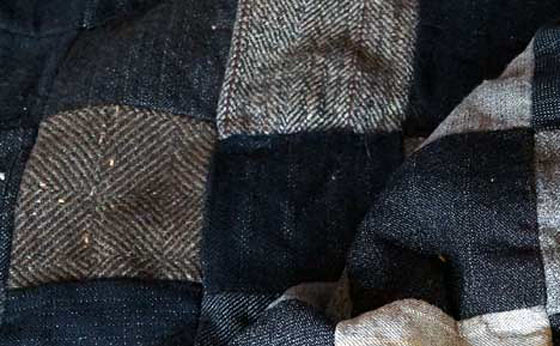
The warmest blanket material. Lets look at Fleece vs Wool. What is the warmest blanket for winter?
Maybe you’re using it simply as a blanket for your bed at home. Or a ‘throw blanket’ while snuggling in your recliner or couch on a cold winter evening. Maybe one for camping. Regardless, lets find out what is the warmest blanket…
( jump straight to my answer / opinion )
UPDATED: More information about the two wonderfully warm materials. And it’s that time of the year when we’re starting to think about getting out our winter blankets and throws…
First,
Where the warmth of a blanket comes from:
Warmth does not originate from the blanket. It comes from the heat of your body.
To keep that warmth near your body, the blanket needs to trap the air close. It does this by the air gap spaces between the fabric threads.
A blanket that stays the warmest is directly related to its fabric capacity to hold warm air!
There are two particular blanket fabric materials that do this quite well. Fleece, and Wool. So, which is the warmest fabric?
Warmest Blanket Material – Is it Wool?
It’s widely considered that the best natural fabric to trap and hold warm air is wool.
If you look at wool fabric under magnification, the fibers do not lie flat against each other. They have a natural ‘crimp’ which keeps the wool fabric relentlessly curly or kinky.
This creates countless air gap spaces, even in the most tightly woven wool fabric, which makes it a leader in holding warmth.
Wool remains effective even when wet. Although it does not dry out very fast.
Wool repels water and also wicks away moisture. Water beads up on the surface because the overlapping scales of the fibers create a hard outer layer that liquid water does not penetrate. Water vapor, however, is absorbed into the wool fibers core (wicking away perspiration).
Wool is made from sheep hair and is naturally fire resistant.
However, ordinary wool makes me itchy! So, any wool blanket that resides in our home must be of the following variety…
What is Merino Wool?
Merino wool does not have the itchy feel of some wool. How is that possible?
Merino wool comes from Merino sheep, a unique breed refined in New Zealand and Australia. They have some of the finest and softest wool of any sheep.
So, is Merino Wool the warmest blanket material?
Merino Wool blankets can get pretty expensive. While searching for the best value proposition, here’s some of what I found…
This one is 80% Merino Wool:
WOOLLY MAMMOTH
(view on amzn)

The following is a blend with synthetic, however apparently mostly Merino Wool:
Merino – Large Throw (63″ x 51″)
(Great for Outdoor Camping too)
(view on amzn)

Or this Merino Wool Throw…
100% Irish Merino – Celtic Cream Couch Throw Blanket 40”x 66”
(amzn)
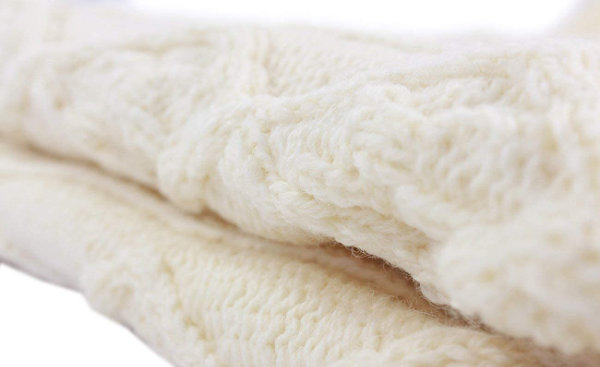
Okay, the next one is “$$$$ Cha-Ching”, but like I said, Merino Wool blankets can get pretty expensive… Hint: Fleece is way less expensive.
John Atkinson Heirloom Blanket, Full/Queen, 90″ x 100″
(amzn)
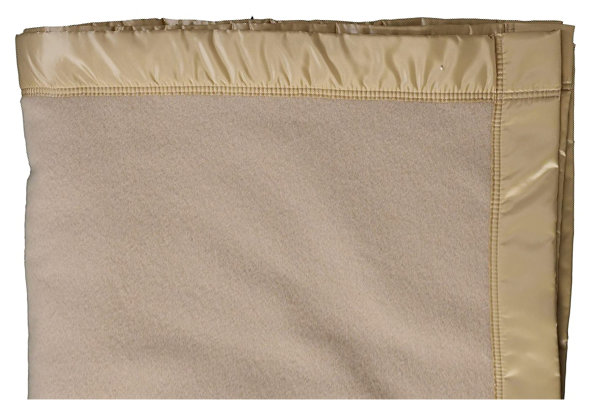
Okay, lets look at fleece…
Is Fleece The Warmest Blanket Material For Winter?
Are fleece blankets warm? Yes, they sure are.
Modern synthetic Fleece comes very close to imitating the natural properties of wool, and is also very effective in trapping warm air. It’s a great alternative to natural wool!
It was originally developed (1979) by Polartec® located in Massachusetts. In 1981, Polartec®, the apparel textile arm of Malden Mills®, invented the modern synthetic fleece and named it PolarFleece®. Today, PolarFleece® is the direct to consumer business owned and operated by Polartec®.
Of interest, the CEO intentionally declined to patent it, which allowed the material to be produced cheaply and widely by many vendors, leading to its quick and wide acceptance.
Fleece provides similar warming characteristics as wool in its warmth retention and also has the capacity to wick away body moisture while holding heat in its many tiny air pockets.
Fleece will keep warm when wet because it retains much of its insulating quality even when wet. A good thing about fleece is it will dry out very quickly (just wring it out).
It is very light weight compared to wool, making it a great choice for various articles of clothing. It comes in various thicknesses: micro, 100, 200, and 300.
My biggest complaint and annoyance about fleece is static electricity! Watch out, fleece readily holds a static electricity charge (ZAP! during the winter), and it will also attract lint, dust, pet hair.
Also, it’s extra flammable. Be very aware (cautious) that fleece is highly flammable! Don’t stand too close to the fire… It is also susceptible to damage from high temperature washing, drying, or ironing.
Fleece blankets are very popular because they’re warm, and they are much more affordable vs wool. You can find these blankets seemingly everywhere.
SHERPA FLEECE THROW BLANKET
(view on amzn)
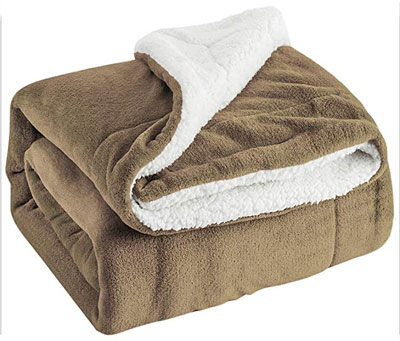
Our mini-Dachshund LOVES fleece blankets…

And the winner of fleece vs wool is…
So, which is the warmest blanket material for winter? Wool or Fleece?
While both wool and fleece can be quite warm, a factor that may sway the decision is weight. How many of you think that you’ll feel a little bit warmer underneath the heft of a wool blanket?
A fleece blanket is very light weight (which has its own advantages!) however in my opinion the more snug the blanket is against your body, the warmer you may feel.
So a nice Merino Wool blanket (no itch!) is my own personal choice for the warmest blanket.
Now with that said, we have both wool and fleece blankets and throws around the house for winter. But most of what we have is fleece material, simply due to its industry dominance (cost factor).
>> Queen size Organic Merino Wool Mattress Comforter / Topper
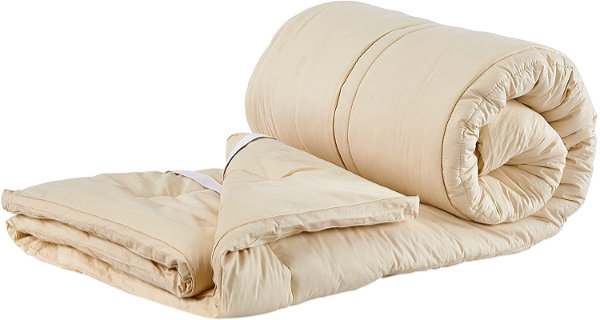
Other Fabrics
If you’re wondering why I haven’t mentioned other fabric materials for a blanket, well, I just wanted to compare wool and fleece (very similar properties).
‘Down’ makes for a very good insulation too! A nice puffy down comforter sure is nice in the winter! There’s natural and synthetic too (some people may be allergic to certain natural fibers).
There are also blankets made of other manufactured fibers such as nylon, acrylic, and other synthetic yarns which imitate the fuzzy loft of woolen fibers, and they all compete in the market space.
So what do you think? Got a favorite warmest blanket material for the winter?
[ Read: Best Gloves With Thinsulate For Cold Weather Outdoors ]
